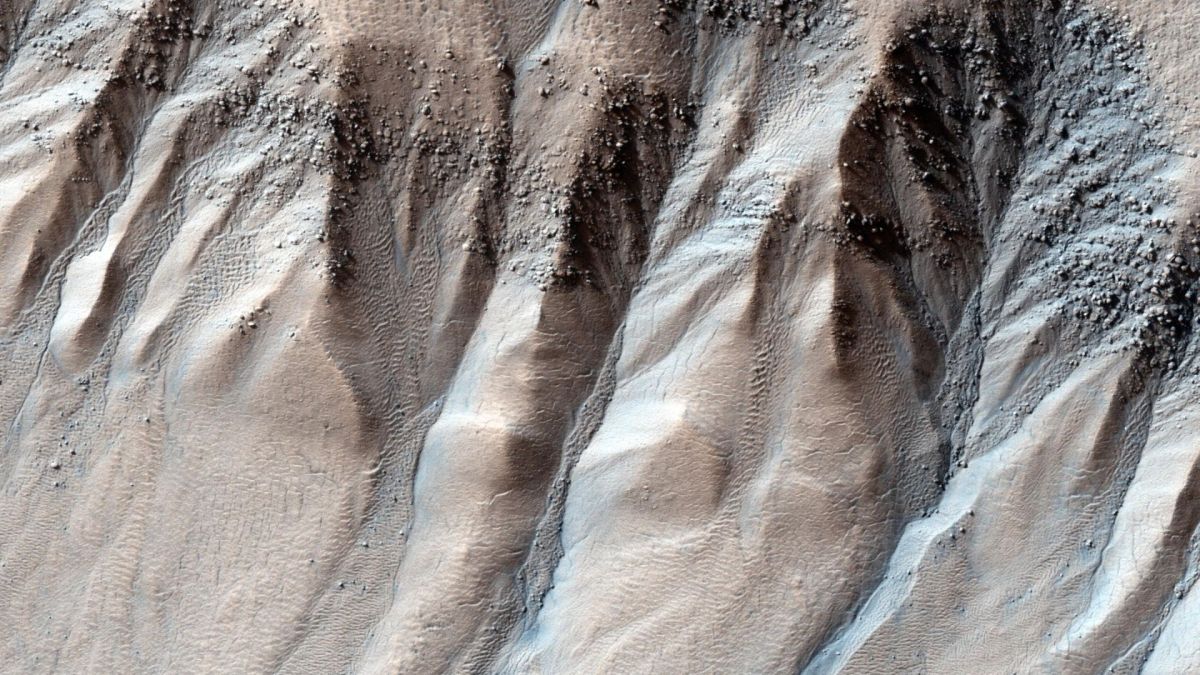In the vast reaches of space, where stars twinkle like distant dreams, lies a cosmic enigma that has baffled the curious minds of scientists for decades: the Red Planet, Mars. With its rusty hues and mystical allure, Mars has captivated our imaginations and beckoned us to unravel its secrets. Among its many mysteries, the peculiar gullies etched on its surface have held a tantalizing allure, hinting at a forgotten chapter of Martian history.
A team of daring planetary scientists set out on a mission of exploration, unafraid of the mysterious appeal of these Martian ravines. A new understanding that would fundamentally alter how we perceive our cosmic neighbour started to develop as they pushed the bounds of discovery and the limits of scientific knowledge.
Picture this: a Martian landscape once teeming with cascading water, carving grand canyons into the terrain. Such an idea may seem straight out of a science fiction novel, but as it turns out, reality often mirrors the wildest of dreams. The revelation that gullies on Mars may have formed when the planet was dramatically tilted on its side was nothing short of astonishing.
The cosmic ballet of celestial mechanics brought forth the crux of this revelation – Mars’ axial tilt, or obliquity. This dance, choreographed by the gravitational interplay between Mars and its celestial companion, the Sun, resulted in dramatic fluctuations in Martian climate over millennia. As the poles of the Red Planet tilted at varying angles with respect to its orbit, the stage was set for a climatic performance like no other.
The scientists’ minds whirred with excitement as they delved deeper into this cosmic symphony. They found that, during epochs of heightened obliquity, Mars experienced radical shifts between winter and summer. The temperature fluctuations, like crescendos and decrescendos in a symphony, led to a remarkable revelation – liquid water on Mars might not be such a far-fetched idea after all.
The thought of liquid water flowing on Mars, akin to Earth’s life-giving rivers and streams, opened the floodgates of possibility. A thrilling notion emerged – life on Mars. Could these gullies, etched into the Martian terrain, hold the secrets of an ancient Martian biosphere? With water being the elixir of life, the tantalizing prospect of extant life on the Red Planet sent shivers down their spines.

(Image credit: NASA/JPL-Caltech/University of Arizona)
A symphony of ideas played out in the minds of these researchers. Perhaps these gullies were the remnants of a Martian epoch when life flourished in the shadows of Martian mountains, and valleys echoed with whispers of a primordial biosphere. Maybe, just maybe, life still lurks beneath the Martian soil, dormant yet resilient, waiting for a cue to step back into the spotlight.
As the last notes of their cosmic journey echoed through the halls of scientific discovery, the researchers felt the weight of responsibility upon their shoulders. The knowledge they had unearthed was not just an academic exercise but a key to unlocking the deepest mysteries of our existence. Their findings could pave the way for future explorations, where rovers might venture to these gullies, probing for signs of life, and sending back signals of discovery to Earth – our pale blue dot, brimming with wonder.
The story of the Martian gullies appeals to every human’s intrinsic curiosity and want to explore. Though Mars, the Red Planet, may be on a different planet entirely, we may see a reflection of our own struggle to comprehend the universe and how we fit into it in its secrets.
So, my readers, as this chapter of Martian exploration comes to a close, we are left with a tantalising look at the cosmic riddle of gullies and the hints of life elsewhere in the universe. Remember that the cosmos is enormous, brimming with mysteries and surprises, ready for brave minds to grasp the stage and dance with interest as we continue to look towards the stars. Who knows what cosmic mysteries we may next discover?
The scientists detailed their findings June 30 in the journal Science.









